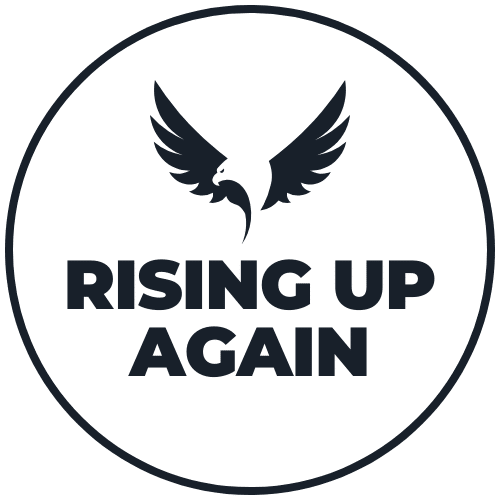It feels like the rug is being pulled out from under you. Weeks, months, or even years of hard work seem to have been for nothing. Your company fails, the product flops, investors pull out, and suddenly you’re left empty-handed.
Failure is one of the biggest fears of tech entrepreneurs, and sometimes it’s inevitable. But that’s the key: failure doesn’t mean the end.
Many of the most successful entrepreneurs failed before they made their breakthrough. The difference is in the way they dealt with it. How can you bounce back after failure and come back stronger?
The fear of failure: a universal challenge
Every entrepreneur knows the fear of failure. This fear often turns into self-sabotage and blocks creative and courageous decisions.
Studies show that 90% of startups fail – but that doesn’t mean that these entrepreneurs fail permanently.
The biggest challenge is changing your attitude towards failure. The difference between those who rise again after a setback and those who give up is learning from mistakes. But what does that mean in concrete terms?
Solution approach: rise again step by step
When I remember my own experiences and conversations with other entrepreneurs, the following basic approach has proven effective: don’t try to overcome all the challenges at once, but plan your comeback step by step.
The following four steps have proven to be effective in practice:
1. Accept and analyze the failure
The first step is often the hardest: accept the mistake. Recognize that setbacks are part of entrepreneurial life. Even successful entrepreneurs like Elon Musk or Richard Branson had to accept massive losses before building their empires. The key is to analyze the failure:
- Was the timing wrong?
- Did the product not fit the market?
- Were there structural weaknesses in the team?
By answering these questions honestly, you lay the foundation for your next steps. It is crucial to reflect objectively without getting lost in feelings of guilt. This way, you will manage to learn from your mistakes.
2. Be flexible and rethink
Flexibility is the secret to success for many successful companies. A famous example is YouTube, which originally started as a video dating website before evolving into the platform we know today.
The key principle is re-orientation. Maybe your original idea was good but not fully developed or aimed at the wrong market. So ask yourself: is there a way to adapt or improve your product? And be ready to flexibly adapt your vision if necessary.
3. Build a strong network
One factor that is often underestimated when rising again after a setback is the network. No one can do it alone. Trust in mentors, co-founders, and friends who will help you look at the situation objectively and develop new ideas.
A good network not only offers mental support but also practical help and new perspectives.
Airbnb had financial problems in the early days and later on. And strategic partnerships and contacts gave the company a decisive boost.
4. Plan for financial stability
Many businesses fail due to poor financial planning. After a failure, it’s critical to develop not only a new plan but also a sustainable financing strategy.
Alternative financing options such as crowdfunding or grant programs can help you reach your next business goal. And you have to control your burn rate (the money your business spends monthly) to avoid another crisis.
The comeback stories of great entrepreneurs
The road back from failure can be tough, but it is doable – and often the road to even greater success.
A classic example is Steve Jobs, who returned after being fired from Apple and turned the company into one of the most valuable in the world. Another example is Henry Ford, who went bankrupt several times before revolutionizing the automobile industry.
These stories show that setbacks are only temporary, and success can often be born from the depths of failure. Let these comebacks inspire you, and realize that failure is a stepping stone to success.
Conclusion: failure as an opportunity
Failure is part of entrepreneurship, but it is not the end.
The most important lesson you can learn from every setback is how to learn from it and reorient yourself. Accept your mistakes, analyze them thoroughly, and develop new strategies. Leverage your network and be prepared to adapt your business model to get back on your feet.
Your success does not depend on whether you fail but on whether you dare to rise again.
Start today
Don’t wait for tomorrow. Start now to think about your mistakes and find new ways. Come up with a plan to emerge stronger from your failure. And don’t forget the most important thing: never give up – the next opportunity is already waiting.
Stay strong!
Additional resources
- Book tip: “The Lean Startup” by Eric Ries
This book provides an excellent basis for learning from mistakes and responding flexibly to challenges. Ries describes how startups can become successful through continuous adaptation and rapid learning. View on Amazon - Podcast: “How I Built This” with Guy Raz – episode: Airbnb, Joe Gebbia
In this episode, Airbnb co-founder Joe Gebbia talks about the company’s difficult beginnings, challenges and setbacks, and how the team managed to make Airbnb a global success. Listen on Spotify - Article: “Why Failure is the Best Teacher” by Harvard Business Review
An insightful article on how entrepreneurs should view failure as a valuable learning opportunity to become more successful in the long run. Read on Harvard Business Review - TED Talk: “The single biggest reason why start-ups succeed” by Bill Gross
An inspiring TED Talk in which Bill Gross, founder of numerous startups, analyzes the main factors that determine the success or failure of a company. Watch on TED
Sources
- Various statistics on startup failure rates
- YouTube’s pivot from video dating to video platform
- The role of the network at Airbnb
- Steve Jobs’ comeback at Apple


